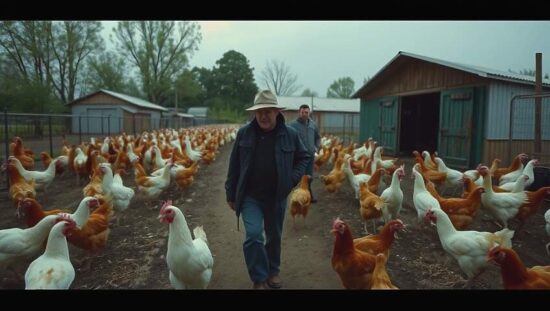The Friedrich Loeffler Institute (FLI), Germany’s leading authority on animal diseases, has issued a stark warning regarding the escalating avian influenza outbreak, particularly affecting wild bird populations. Institute President Christa Kühn flagged a “remarkably dynamic development” characterized by an unusually rapid progression of infections within the past few days, despite current case numbers remaining below historical peaks.
While the risk to human health remains classified as “very low” according to Kühn, the swiftness of the virus’s spread among bird populations is raising concerns. The FLI maintains a “high” risk assessment for further outbreaks within commercial poultry farms, highlighting the potential for significant economic disruption and raising questions about the effectiveness of current preventative measures.
The most severely impacted species currently are cranes and other wild birds, with localized mortality rates exceeding ten percent. Kühn emphasized the difficulty in accurately quantifying the true extent of the losses, due to the widespread nature of the losses and the inability to locate affected birds. While she anticipates a recovery of the crane population due to a favorable breeding year, the situation underscores vulnerabilities in the biodiversity of the region.
The use of the term “superspreader” in connection to cranes has been firmly rejected by Kühn, who criticized its potential to inflame public anxieties and distort the understanding of the disease’s dynamics. While acknowledging cranes’ susceptibility to infection and their role in viral shedding, Kühn stressed they are not the sole determinant of the outbreak’s trajectory, placing greater emphasis on the multifaceted nature of the transmission pathways.
Authorities are reinforcing public health advice regarding minimizing contact with potentially infected wild birds, recommending that pet owners keep cats indoors and keep dogs leashed in affected areas. While acknowledging the potential risk to companion animals, Kühn cautioned against disproportionate reactions, advocating for vigilance rather than alarm. The situation demands a carefully considered and targeted approach to mitigate risk, balancing public safety concerns with the need to avoid unnecessarily damaging the ecosystems already stressed by the ongoing crisis. The continued evolution of the virus and its impact on both avian and potentially human populations remains a significant public health challenge that requires ongoing monitoring and adaptability.





